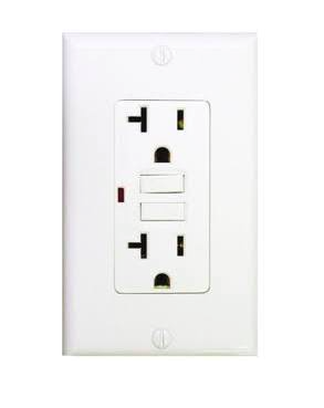
A ground fault happens whenever electricity escapes the confines of the wiring in an appliance, light fixture, or power tool and takes a shortcut to the ground. When that short cut is through a human, the results can be deadly. About 200 people in the U.S. alone die of ground faults each year, accounting for two-thirds of all electrocutions occurring in homes.
To prevent such accidents, Charles Dalziel, a professor of electrical engineering at the University of California, invented the ground-fault circuit interrupter (GFCI), in 1961. Most of the time, his invention does nothing; it just monitors the difference in the current flowing into and out of a tool or appliance. But when that difference exceeds 5 milliamps, an indication that a ground fault may be occurring, the GFCI shuts off the flow in an instant — as little as .025 second.
GFCIs are required by the National Electric Code in all new kitchens, bathrooms, crawl spaces, unfinished basements, and most outdoor receptacles. Owners of older houses should replace GFCI receptacles at those locations or have GFCI breaker switches mounted in the main breaker panel. Portable GFCI adapters, which plug into regular wall receptacles, are also a good choice.
The great thing about GFCIs is that they protect you whether or not your wiring is grounded. Because lightning and other power surges can damage a GFCIs delicate circuitry at any time, you should do the following monthly test: Plug in a light fixture and turn it on. Then push the device’s test button. If the light stays on, the GFCI needs to be replaced. You may then call a knowledgeable electrician.








